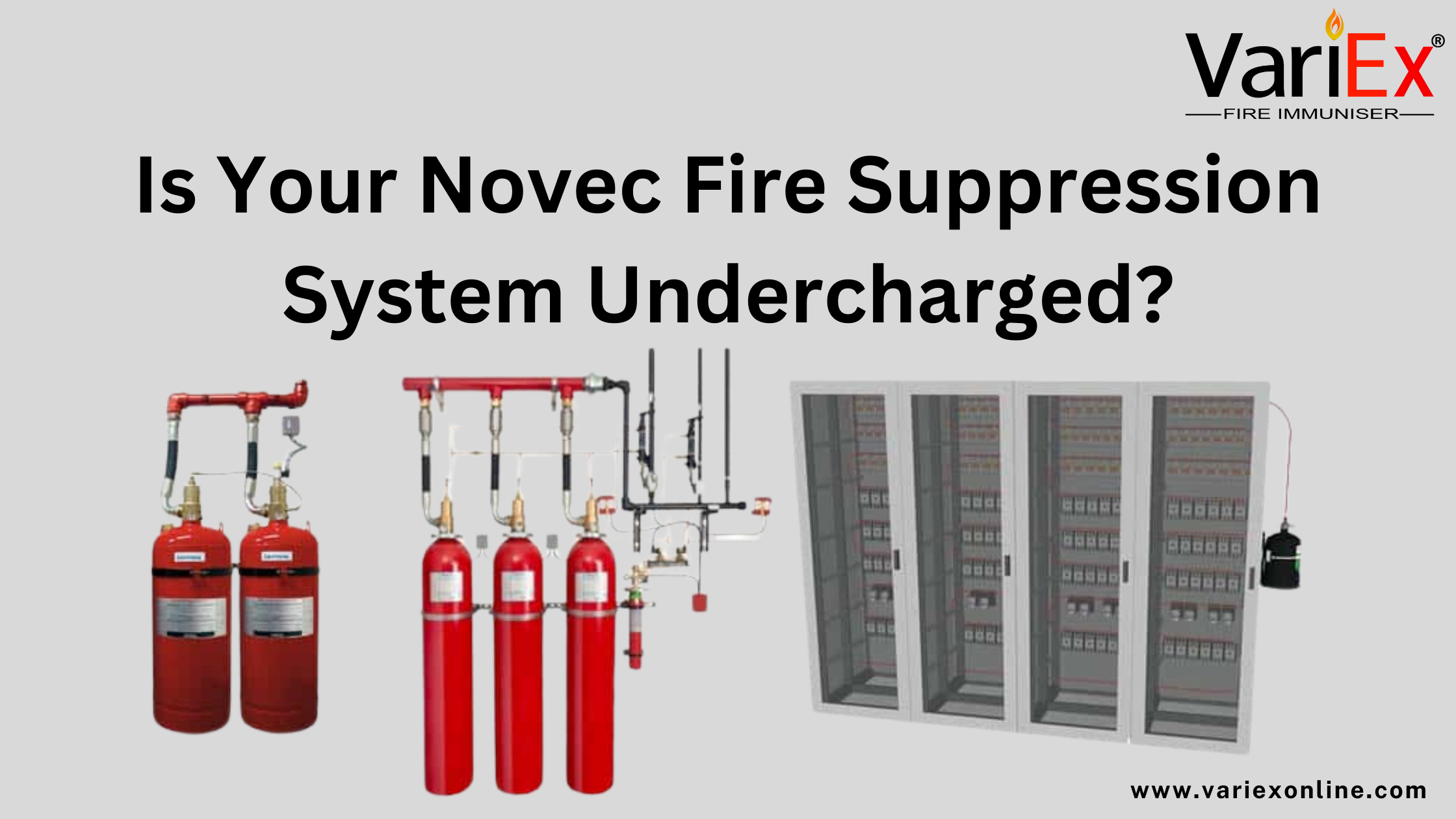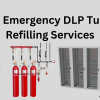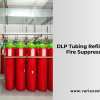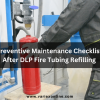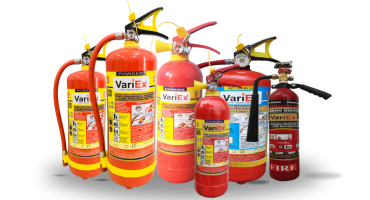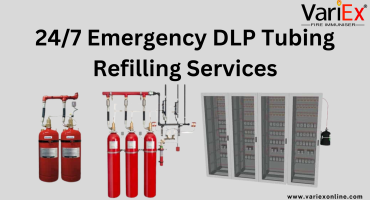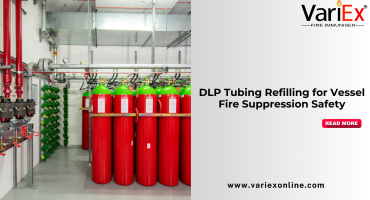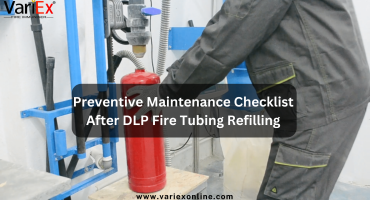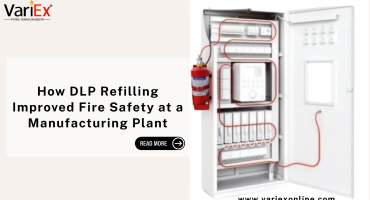![]()
Fire Immuniser
+91-7829629111
Email: info@variex.in
Varistor Technologies Pvt. Ltd.
Block-1, First Floor, Ardente Office One, Hoodi Circle, ITPL Main Road, Bengaluru, Karnataka 560048, IN
Is Your Novec Fire Suppression System Undercharged?
Is Your Novec Fire Suppression System Undercharged?
Fire safety is non-negotiable, especially in mission-critical environments like data centers, healthcare facilities, telecom rooms, and industrial plants. One of the most advanced and widely used clean agent systems today is the Novec 1230 fire suppression system. But even the best technology fails if not properly maintained. An undercharged Novec fire suppression system is one of the most overlooked yet dangerous issues—and it could compromise the entire fire safety infrastructure.
In this guide, we’ll help you identify whether your Novec system is undercharged, explain the associated risks, show how to verify it, and provide expert-backed solutions to keep your facility safe and compliant.
What Is a Novec Fire Suppression System?
Novec 1230 is a clean agent suppression system developed by 3M. It uses a non-conductive, non-toxic chemical compound (dodecafluoro-2-methylpentan-3-one) to extinguish fires without damaging sensitive electronics or leaving any residue. Stored as a liquid and discharged as a gas, it’s safe for occupied areas and has a global warming potential (GWP) of less than 1.
However, Novec systems depend heavily on correct pressurization and agent volume. If the system becomes undercharged due to leakage, partial discharge, or faulty maintenance, it won’t be able to suppress fires effectively.
What Does “Undercharged” Mean?
An undercharged Novec fire suppression system means that the quantity of Novec agent inside the cylinders is below the manufacturer-recommended or design-specified level. This undercharging can occur due to:
-
System discharge (accidental or during fire suppression)
-
Minor leaks in piping or cylinders
-
Incomplete refilling after prior maintenance
-
Pressure loss due to faulty valves or temperature fluctuations
Signs Your Novec Fire Suppression System Might Be Undercharged
-
Low Pressure Indicator on Cylinder Gauge
Most Novec cylinders have a pressure gauge. If the needle is below the green zone, it’s a clear sign of undercharging. -
System Panel Warning or Alarm
Integrated control panels often send alerts or fault signals if there's a pressure drop or leak. -
Overdue Maintenance or Inspection
If your system hasn’t been checked in over a year, it could already be undercharged without your knowledge. -
Visual Corrosion or Cylinder Damage
External damage or corrosion might compromise system integrity and cause leaks. -
Inconsistent Cylinder Weight
A drop in cylinder weight compared to its full-charge baseline suggests loss of agent.
Dangers of an Undercharged Novec Fire Suppression System
-
Incomplete Fire Suppression
An undercharged system may activate but fail to suppress the fire fully, allowing it to spread and cause significant damage. -
Violation of NFPA & ISO Standards
NFPA 2001 and ISO 14520 mandate regular inspections and maintenance. Non-compliance can result in fines, legal action, or insurance claim denial. -
Operational Downtime
A malfunctioning suppression system can lead to temporary shutdowns after audits or incidents. -
Loss of Assets or Data
In sectors like IT and healthcare, even brief fire exposure can be catastrophic.
How to Check If Your Novec System Is Undercharged
1. Manual Gauge Inspection
Check the gauge on each cylinder. It should be in the green zone, typically around 360 psi (25 bar) at 21°C (70°F).
2. Cylinder Weighing
Compare the actual cylinder weight with the full-charge reference weight (noted on the label).
3. Electronic Pressure Monitoring
Advanced Novec systems use digital sensors to provide real-time pressure data via the control panel.
4. Third-Party Audit
Hire certified technicians to perform hydrostatic testing and leak detection annually.
Comparison Table: Charged vs. Undercharged Novec Systems
| Feature | Fully Charged System | Undercharged System |
|---|---|---|
| Fire Suppression Effectiveness | 100% | 30-70% (or complete failure) |
| Cylinder Pressure (at 21°C) | ~360 psi | Below 330 psi |
| Regulatory Compliance | Yes | No |
| Insurance Validity | Maintained | At Risk |
| Operational Status | Safe and Active | Compromised |
| Risk Level | Minimal | High |
How to Fix an Undercharged Novec Fire Suppression System
1. Immediate Cylinder Isolation
If undercharging is detected, isolate the affected cylinder to prevent total system failure.
2. Contact Certified Fire Safety Technicians
Only certified professionals can safely handle Novec agents and perform refilling or replacement.
3. Refill with Genuine Novec 1230 Agent
Ensure that the replacement agent is original and meets 3M or equivalent standards.
4. System Leak Testing and Retesting
Technicians should perform a thorough pressure and piping test to ensure future reliability.
5. Update System Logs and Compliance Records
Document the refill and maintenance process for compliance with NFPA and insurance standards.
Best Practices to Prevent Undercharging
-
Schedule Annual Maintenance as per NFPA 2001 and ISO 14520 standards.
-
Use IoT-enabled Monitoring Systems that provide alerts for pressure drops in real-time.
-
Always Hire Authorized Vendors to ensure quality and regulatory compliance.
-
Log Cylinder Weights during each refill for easier tracking over time.
-
Perform Post-Discharge Refilling Immediately — don’t delay refilling after system activation.
How Often Should You Inspect for Undercharging?
According to NFPA 2001, pressure gauges must be visually inspected at least once a month. Additionally, a full system inspection, including cylinder weighing and piping analysis, should be conducted annually. If a discharge has occurred, immediate inspection and refilling are mandatory.
Why Timely Refilling Is Non-Negotiable
Timely refilling after undercharge detection ensures:
-
System readiness
-
Regulatory compliance
-
Business continuity
-
Insurance coverage
-
Personnel safety
Neglecting refilling can lead to equipment damage, legal complications, and loss of life in worst-case scenarios.
Conclusion
If you suspect your Novec fire suppression system is undercharged, take action immediately. It’s not just about protecting equipment—it’s about safeguarding lives, complying with laws, and ensuring uninterrupted operations. Regular inspections, trained technicians, and proactive maintenance can keep your Novec system at full strength, ready to handle any emergency.
Don’t wait for a fire to find out your system wasn’t ready. Inspect. Refill. Protect.
Frequently Asked Questions
Check the cylinder gauge. If it’s below the green zone or pressure is below 360 psi, the system may be undercharged.
No. Only certified fire safety professionals should handle Novec 1230 agents and perform refilling.
It may fail to suppress fires, leading to asset loss, system damage, and safety risks.
Visual inspections should be monthly, with full maintenance checks conducted at least once a year
Common causes include system discharge, leaks, poor maintenance, and improper refilling procedures.
Final Say
At VariEx.in and VariexOnline.com, we specialize in supplying and installing top-quality fire fighting systems and equipment. From fire extinguishers to advanced suppression systems, we offer comprehensive solutions tailored to your needs. Our experienced team ensures precise installation and maintenance for optimal safety.
Trust VariEx for reliable fire protection. Contact us online or call 7829629111 to learn more.
We specialize in manufacturing, supplying, and distributing a comprehensive range of fire fighting equipment, including state-of-the-art fire extinguishers. Read our most searched blogs and find interesting information on topics such as how to use a fire extinguisher, how to calculate fire fighting water tank capacity, fire extinguisher refilling, obtaining a Fire NOC, understanding fire fighting systems, types of fire protection systems, the fire hydrant system, and the fire sprinkler system. These resources provide essential knowledge for ensuring safety and compliance with fire safety regulations. Additionally, you can explore guides on the maintenance of fire protection equipment, the latest advancements in fire safety technology, and best practices for fire risk assessment and management.
Our expertise extends to fire alarm systems, fire hydrant systems, and fire suppression systems, including fire sprinklers. Each product meets rigorous international standards for reliability and performance, ensuring effective fire safety products tailored to diverse applications and industries. Additionally, we are providing Fire Extinguisher Refilling and AMC services to ensure ongoing maintenance and operational readiness of fire safety equipment.


